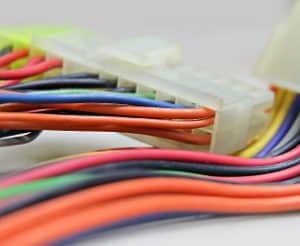Wire harnesses can be tricky without the help of an experienced wire and cable manufacturer.
At its most basic, a wire harness is an effective way to organize wires or cables by grouping or bundling them together in order to transmit signal or electrical power. They can be used in almost any application that requires multiple wires or cables. While many of these harnesses are complex with multiple wires and components, they don’t have to be. A wire and cable manufacturer is able to design and produce a wide variety of complex or simple wire harnesses that are truly tailored to the needs of your project.
Benefits of Wire Harnesses
Complex equipment and machinery often require a great deal of wiring to function. Running each and every one of these wires separately can be time consuming. Additionally, that many wires can be bulky if there are space constraints, and keeping multiple wires organized and running in the right direction can be challenging. Integrating the component cables and wires into a single harness allows for faster, easier installation that doesn’t take up more valuable space than necessary.
However, there’s more to it than just a neat and tidy wiring system. In some cases, it is extremely important to prevent certain wires from coming into contact. Designing a wire harness instead of running individual wires allows a wire and cable manufacturer to better protect the conductors from environmental issues like vibration, moisture, heat, cold, and abrasion. Bundled wires can also be further protected from shorts and electrical fires by using non-flexing or flame retardant jacketing materials.
Manual Assembly
Believe it or not, a wire harness is more efficiently manufactured by hand. There are steps during the pre-production stage that can be automated, but the assembly process can be complex. Depending on the needs of the project, production can include multiple steps, such as:
- Taping Breakouts
- Binding Components with Tape, Cable Ties, or Clamps
- Conducting Multiple Crimps
- Routing Wires through Sleeves
This makes manual assembly more economical, especially when working in small batches. The manual assembly process also means wire harnesses can take a little longer to produce than individual wires. It’s vital to work with an experienced wire and cable manufacturer that understands how to keep the production process on schedule.
Testing Performed by a Wire & Cable Manufacturer
No reputable wire and cable manufacturer would deliver a wire harness that has not been fully tested. However, the sheer number of cable and wire components makes this process a little more involved than testing individual wires. That’s where a pre-programmed test board comes in. By programming the test board with the required electrical characteristics for the project, we are able to plug in the finished wire harness and test the components individually or in groups as needed making for a safer, more stable final product.
Conclusion
An experienced wire and cable manufacturer is a valuable partner when you need a well-designed wire harness. Not only are they able to design a harness that meets all of the requirements of your equipment, but they are also knowledgeable enough to understand the time and budgetary challenges involved in producing a complex solution. When you’re ready to start your next project, contact the team at Meridian Cable. We look forward to talking with you.